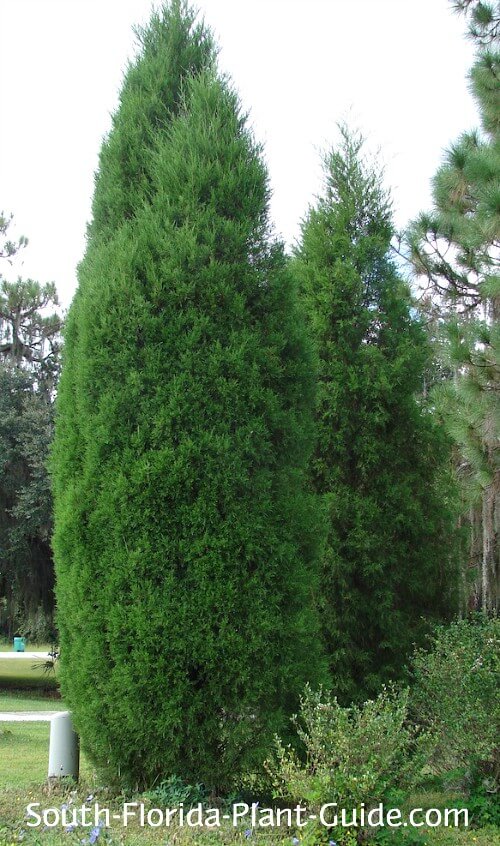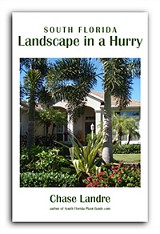Southern Red Cedar Tree
Juniperus silicicola
The magnificent southern red cedar is a low-maintenance tree that makes an elegant statement in South Florida home landscapes.

Stately and handsome, this tree's natural symmetry is perfect for neat freaks who like everything manicured and "just so."
The red cedar (sometimes called Florida Red Cedar) is the ultimate in an outdoor Christmas tree, and though its form is pyramidal it can grow wider as it matures.
Best suited for a somewhat spacious landscape, red cedars can be used singly or planted in rows to form a privacy screen or tall hedge. They also make ideal windbreak trees.
Not actually a cedar, this tree is a member of the juniper family, a group known for ease of care.
These trees have beautiful emerald-green, soft, fine foliage and provide dense cover and shelter for wildlife. Their berries attract birds.
Plant specs
These evergreen trees grow to about 40 feet with a moderate growth rate.
They do best in full to part sun and need well-drained soil. Red cedars are moderately salt-tolerant, and are drought-tolerant once they're established.
Cold hardy to a fault, a red cedar does well anywhere in South Florida.
Plant care
Add top soil or organic peat humus to the hole when you plant. You can also add in composted cow manure to enrich the soil around the tree's rootball.
No trimming is needed. The naturally upright shape of these pyramidal trees needs no help.
However, you can prune off lower branches (if you must) to allow more room for foot or vehicle traffic to get by.
Drought tolerant once established, a southern red cedar does best with regular irrigation and enough time between waterings for the soil to dry out. If nothing else, at least water well during dry spells.
Fertilize 3 times a year - in spring, summer, and fall - with a good quality granular fertilizer.
Plant spacing
Come away from the house 10 feet or more. Place these trees about 6 to 8 feet from each other for a screen or hedge.
Roots are usually not a problem so you can plant 5 to 6 feet from a walk.
Allow at least 4 feet (more if you can) between a cedar and the nearest large shrub.
Landscape uses for southern red cedar tree
- single yard specimen
- windbreak
- privacy screen
- along the property line
- lining a large drive
- in pairs flanking the entrance to a driveway
A.K.A. (also known as): Southern Redcedar (another spelling)
GOOD SNOWBIRD PLANT? YES
COMPANION PLANT SUGGESTIONS: Burfordii holly, dwarf oleander, Texas sage, Knock Out rose, cocoplum, and crape myrtle.
Other trees you might like: Japanese Blueberry, Italian Cypress
Take a break!
The ultimate guide to low-maintenance plants
and landscaping!
An ebook by
Chase Landre
author of
South-Florida-Plant-Guide.com
Learn more!
Get a greener thumb!
Want to learn more about South Florida planting, watering, fertilizing and dealing with weeds and pests?
See our Gardening How-To section for answers!
Get instant curb appeal!
An ebook by
Chase Landre
author of
South-Florida-Plant-Guide.com
Learn how to get instant curb appeal with fast growing plants and landscaping techniques!



